Author Archive
-
Caris: Varian Medical to $82
Eddy Elfenbein, March 12th, 2012 at 1:33 pmVarian Medical ($VAR) is one of those stocks I always hope will pull back but never seems to. It just goes up and up.
Barron’s notes that Caris recently raised its one-year price target for Varian to $82 per share.
We are upgrading Varian to Buy from Above Average: While the company has taken about 15 cents of dilution a year investing in proton therapy, we now expect that to reverse as we approach 2015.
Still a bit off, as Varian will not be able to book profits initially until completion, but a DCF/discounted-EPS valuation indicates an $8-$12 incremental to the current stock price and erasing some of the dilution in 2013. Adding this to our $72 price target, which is based on 18 times our 2012 EPS assumption, gives a 12-month price target of $82.
-
The Demographic Depression
Eddy Elfenbein, March 12th, 2012 at 11:43 amJames Surowiecki in the New Yorker:
Perhaps the most striking feature of this economic downturn is the way it changed the rate of household formation. Between 1947 (when the government first started collecting data on the subject) and 2007, the number of households in the U.S. rose every year, closely tracking population growth. This recession dramatically broke the trend. In 2008, 2010, and 2011, the number of households dropped, even as the population continued to grow. As Gary Painter, an economist at U.S.C., has argued, the decline in household formation was largely a response to the slow economy and soaring unemployment among the young.
The dwindling number of new households, which the economist Scott Sumner has called a “demographic depression,” isn’t just a result of the weak recovery; it has also been a major cause. We rely on new households to help drive economic activity, in part through the construction of new homes. But, this time around, construction, which normally leads the way out of recession, has been a drag on the economy. While overbuilding during the housing bubble bears some of the blame, so, too, does the lack of new households: when people are doubling up, there’s little demand for owning or renting. This hurts not only the construction industry but all the businesses that make the products that you put in new homes. Spending on durable goods—washing machines and the like—has been very weak over the past few years.
That’s the bad news. The good news is that when this trend reverses there will be a spike in demand, both for housing, especially rentals, and for all the stuff that you put in a house. Some pessimistic observers argue that this reversal will never happen, and that the U.S. will become more like European countries—Italy, say—where living at home until one is older is more common. But it’s easy, during a crisis, to mistake a cyclical change for a permanent one, and surveys show no evidence that young Americans are more interested in living with their parents now. Painter’s study of past recessions shows that, in the past forty years, household formation has slowed notably during downturns but has rebounded as the unemployment rate fell. It seems much more likely that the same will happen this time around than that American aspirations and social norms changed overnight in 2007.
-
Nouriel Roubini Three Years Ago
Eddy Elfenbein, March 12th, 2012 at 11:04 amOne of the common complaints of the financial media is that perma-bears are rarely held to account. Various gloom-and-doomers go on TV and make vague predictions of disaster, and whatever bad news comes to pass, they claim credit for predicting.
As someone who has his Buy List up for all the world to see all the time, I find it infuriating that these folks can get away with it. Just to be clear, I don’t think being wrong with a prediction is that bad. What I hate is that well-known people can so easily walk away from what they said and no one seems to care.
Let’s jump in the Wayback Machine and see what Nouriel Roubini was saying three years ago at the beginning of one of the greatest bull markets in history.
How Low Can The Stock Markets Go?
Nouriel Roubini, 03.12.09, 12:00 AM EST
The answer: Lower … much lower.For the last six months, I have been arguing that, in spite of the sharp fall in U.S. and global equities, there were significant downside risks to stock markets. Thus, repeated bear market rallies would fizzle out under the onslaught of worse than expected macro news, earnings news and financial markets/firms shocks.
Put simply: If you take a macro approach, earnings per share of S&P 500 firms will be–quite realistically in 2009–in the $50 to $60 range. (Some may even argue that in a severe recession they could fall to $40). Then, the question is what the multiple, i.e., the price-to-earnings ratio, will be on such earnings. It is realistic to expect that the multiple may fall in the 10 to 12 range in a U-shaped recession.
For the record, the S&P 500 earned $56.86 in 2009 but the P/E Ratio soared because the market correctly saw that earnings would come roaring back. The S&P 500 ended 2009 at 1,115 which was nearly 20 times earnings.
Then, even in the best scenario (earnings at $60 and P/E at 12), the S&P index would be at 720. If either earnings are closer to $50 or the P/E ratio is lower, at 10, then the S&P could fall to 600 (12 times 50 or 10 times 60) or even to 500 (10 times 50). Equivalently, the Dow Jones industrial average (DJIA) would be at least as low as 7,000 and possibly as low as 6,000 or 5,000. And using a similar logic, I have argued that global equities–following the U.S.– had another 20%-plus downside risk.
It didn’t turn out to be. Going by the intra-day low, the S&P 500 doubled in less than two years. This was one of the greatest buying opportunities in history.
I expect to soon see Professor Roubini groveling before Jon Stewart and promising that he’ll try to do better.
-
Can the S&P 500 Reach 2,000 Next Year?
Eddy Elfenbein, March 12th, 2012 at 10:14 amHow’s that for an eye-catching title?
But seriously, let’s take a look. Below is a chart of the S&P 500 along with its earnings. The index is the black line and it follows the left scale. The earnings is the yellow line and it follows the right scale.
The two lines are scaled at a ratio of 16-to-1 so whenever the lines cross, the market’s P/E Ratio is exactly 16. The reason I use 16 is because that’s been the market’s long-term earnings multiple.
You’ll notice that going by this metric, the stock market is still undervalued. At the October 2011 low, the S&P 500 dropped to its lowest P/E Ratio is 23 years.
The future part of the yellow line is Wall Street’s consensus estimate as provided by S&P. Let’s look at these numbers: The S&P 500 earned $96.42 in 2011. Wall Street currently expects $105.01 for this year and $119.13 for 2013. If we take a standard earnings multiple of 16, that would give us 1,906.08 on the S&P 500 by the end of next year. That would be a nice 39% run in less than 21 months.
The problem I have isn’t with the earnings multiples, but I think the earnings projections are, for now, way too optimistic. It’s certainly possible that we could see 8.9% earnings growth this year followed by another 13.4% next year, but that seems like a big stretch.
Corporate profit margins have gone about as far as they can go. Companies can no longer cut their way to prosperity; plus they have little power to raise prices. This is why the employment reports are so crucial. Companies need more bodies coming in the door.
Wall Street’s consensus assumes a major re-acceleration in earnings growth later this year (note the bend upwards in the yellow line once it hits $100). I just don’t see where that comes from. The most likely scenario is that the earnings line begins to flatten out around $100 to $105. That’s still a good deal for stocks but I think these earnings forecasts need to come back down to reality.
-
Morning News: March 12, 2012
Eddy Elfenbein, March 12th, 2012 at 5:52 amEuro Weakness Wanes as Traders Drop Bear Views on Draghi
Greek Debt Swap Could Be Short-lived Reprieve
China Central Bank Sees Room for Policy Maneuvering
Import Surge Sends China Trade to Decade-deep Deficit
Singapore Regulator Gets International Requests for Help on Libor Probes
Dubai Record Airport Traffic Shows Rebound From Property Slump
Latest Stress Tests Are Expected to Show Progress at Most Banks
As Fed Officials Prepare to Meet, They Await Clearer Economic Signals
Airline Industry Raises Heat Over EU Scheme
Asahi Kasei Will Pay $2.2 Billion for Zoll to Expand in U.S. Health Care
VW’s Funding Lead Over Peugeot Widens as Cash Pile Swells
Energy Prices Boost Sasol Profit
Aeroports de Paris Agrees to Acquire 38% of Turkey’s TAV
Temenos Says Misys Merger Talks End
Swatch Says Tiffany Files $590 Million Counter-Claim
Phil Pearlman: Amid the Angst, Great American Brands Flourish
Joshua Brown: The Fed Has No Idea What Happens Next – And That’s Okay
Be sure to follow me on Twitter.
-
Our Buy List YTD
Eddy Elfenbein, March 10th, 2012 at 2:30 pmWe’re nearly one-fifth of the way though the year so let’s take a look at how our Buy List is doing. Through Friday, our Buy List is up 10.03% for the year compared with 9.01% for the S&P 500 (dividends not included).
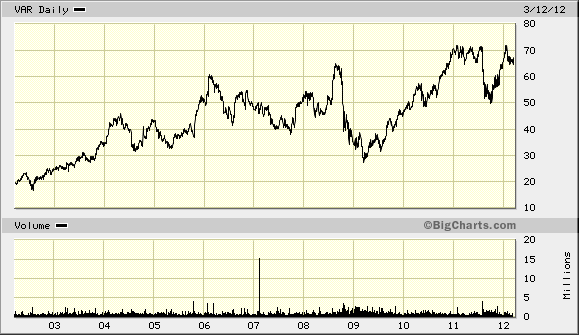
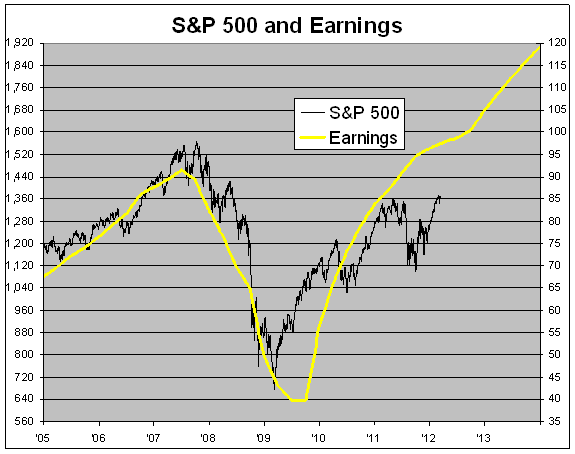
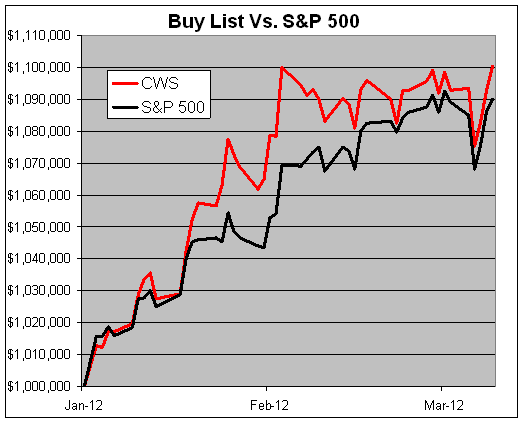
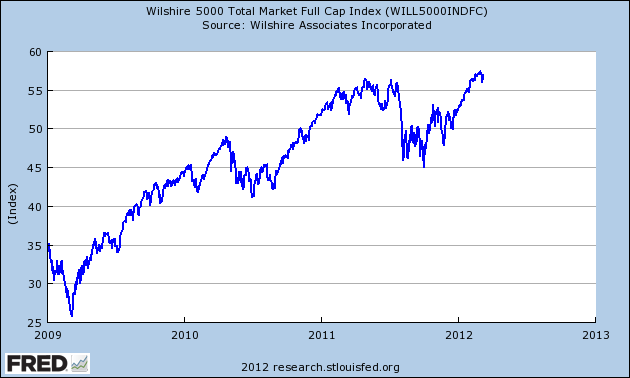
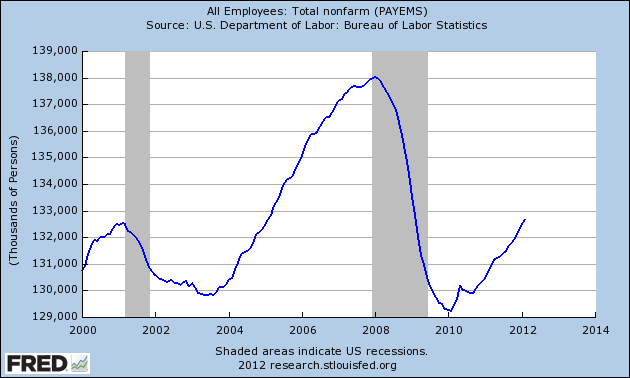
 Eddy Elfenbein is a Washington, DC-based speaker, portfolio manager and editor of the blog Crossing Wall Street. His
Eddy Elfenbein is a Washington, DC-based speaker, portfolio manager and editor of the blog Crossing Wall Street. His